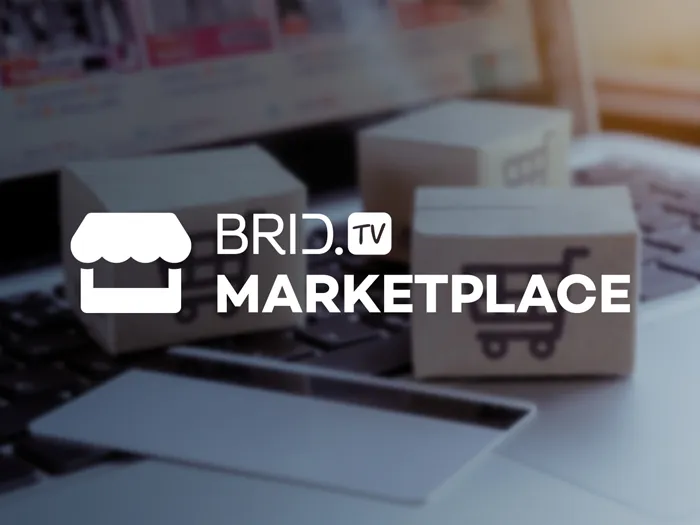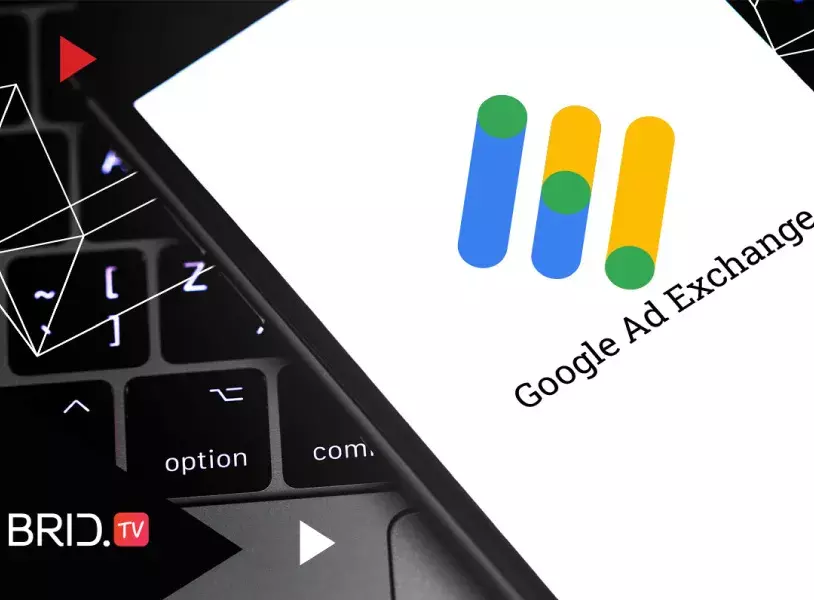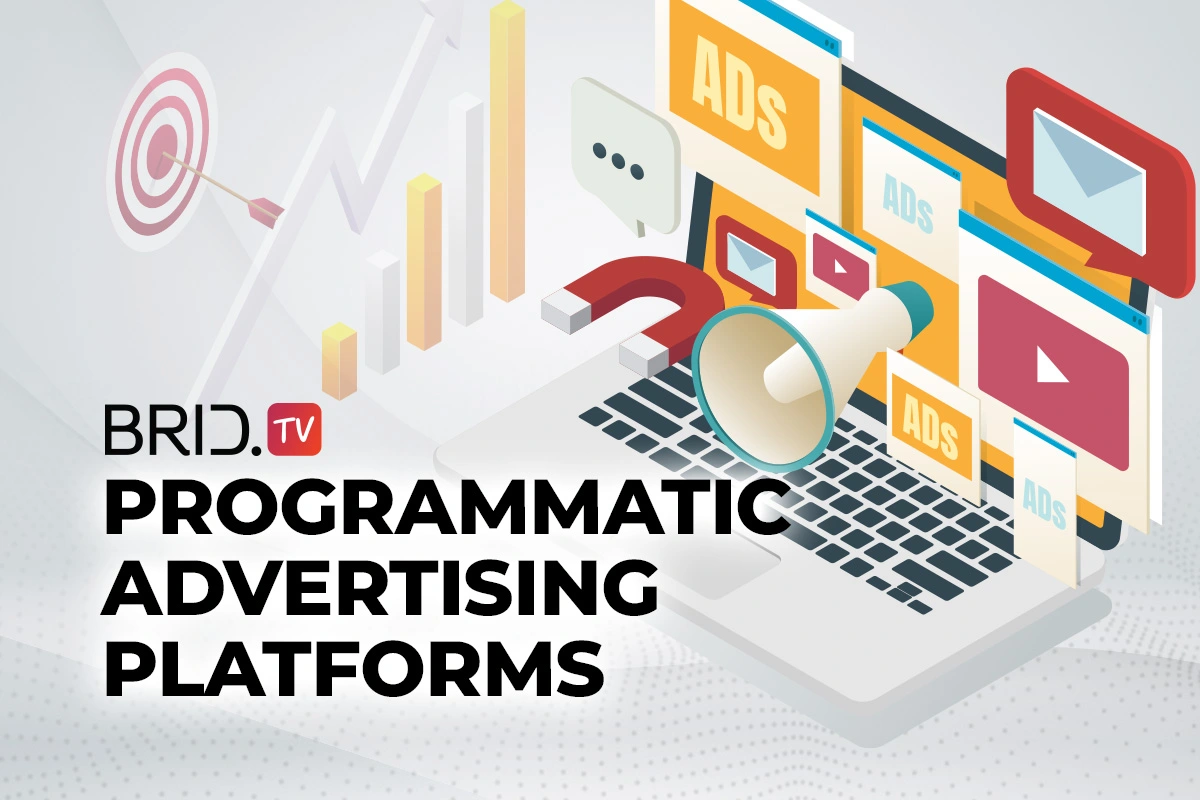Are you looking to start monetizing your content or improve your current monetization infrastructure? If so, consider finding a programmatic ad provider. Programmatic advertising platforms make the process of selling ad inventory simpler and more streamlined. With the right ad provider by your side, you won’t have to worry about low ad fill rates or CPMs.
However, choosing the best programmatic ad platform is not as easy as it seems. There are many major industry players on the market, and each comes with its own set of features and tools. To make your choice a little easier, we have put together a list of the top 12 programmatic advertising platforms right now. But first, let’s start with the basics and learn more about what programmatic advertising is and how it works. And if you’d like to access the list right away, you can do so from the table of contents below.
- What Is a Programmatic Advertising Platform?
- How Do Programmatic Advertising Platforms Work?
- Do You Even Need a Programmatic Ad Platform?
- Sell-Side vs. Buy-Side Programmatic Platforms
- Top 12 Programmatic Ad Platforms for Publishers and Advertisers
- So Which Programmatic Ad Platform Is Best for You?
- FAQ
What Is a Programmatic Advertising Platform?
A programmatic advertising platform is an online marketplace for buying and selling ad inventory programmatically. But what does that actually mean?
Programmatic advertising is an automated technology that allows advertisers and publishers to trade in ad space with minimal effort. It is a real-time advertising format that uses data to find the best matches for advertisers and publishers, allowing them to avoid having to strike direct deals.
How Do Programmatic Advertising Platforms Work?
Although it may sound simple — you offer ad inventory on the marketplace, it is sold to the highest bidder, and you enjoy the ad revenue — programmatic advertising is quite a complex process.
When a publisher joins a supply-side platform, this platform collects data on the publisher’s ad real estate. Every time a user visits the publisher’s website or plays a video, this real estate is offered on an ad exchange. In turn, the ad exchange forwards the offer to a demand-side platform, which tailors to advertisers, and creates an auction for the real estate.
The demand-side platform uses data collected from advertisers to find the best matches for their requirements and places bids. Then, a process such as header bidding or waterfalling is used to assign the real estate to the right bidder. Finally, the user on the publisher’s website sees the ad from the winning bid.
Demand-side platforms, supply-side platforms, and ad exchanges can be standalone solutions, or they can all belong to the same ad network.
This whole process happens automatically and in less than a second. It requires little effort on the publishers’ and advertisers’ side, saving them time and money. That’s precisely what makes this advertising system superior to direct deals. Although direct deals are a great option for larger publishers, they also require a lot of resources, which smaller businesses can’t really afford.
Do You Even Need a Programmatic Ad Platform?
Technically, you don’t need a programmatic advertising platform to monetize content through ads. However, having one will surely make the whole thing easier. Some of the main benefits of programmatic advertising platforms are:
- Extensive Reach — The best ad platforms provide access to high-quality demand and supply. They help advertisers reach many potential customers, while publishers get to profit off of their ad real estate.
- Precise Targeting — Good audience targeting ensures better campaign results. This, in turn, brings in higher revenue to publishers who serve these campaigns.
- Time-Efficiency — Direct deals in advertising are known to require a lot of time and resources to strike and maintain. Although they have higher earning potential, the volume that ad platforms bring to the table in a short time is unbeatable.
- Ad Management Tools — Most high-end ad platforms come with extensive tools for managing and optimizing campaigns. This is a crucial feature, as it ensures the optimal performance of each ad.
Sell-Side vs. Buy-Side Programmatic Platforms
As we have already mentioned, supply-side platforms, also known as sell-side platforms, and demand-side platforms, also referred to as buy-side platforms, are integral parts of the programmatic advertising process. The main difference between them is who they’re meant for.
Supply-side platforms are designed for publishers, i.e., those who supply ad inventory. These platforms come with all the tools and features that a publisher may need, such as ad yield management.
On the other hand, demand-side platforms are meant for advertisers, i.e., the buyers of ad inventory. Needless to say, these platforms come with all the tools and features that advertisers use, such as audience targeting.
· Premium Google ADX Demand
· Omnichannel Monetization
· Rich Selection of Video Ad Formats
· Real-Time Performance Tracking
· Automated Reporting

Top 12 Programmatic Ad Platforms for Publishers and Advertisers
Now that we’ve covered what programmatic advertising platforms are, it’s time to choose the right one for your business. To make this choice a little easier, we’ve put together a list of some of the best programmatic ad networks out there.
1. Google ADX
| Platform Type | Minimum Traffic |
|---|---|
| Ad Exchange | 5 Million Monthly Page Views |
Google ADX is an ad exchange owned by Google, and it is a part of one of the largest advertising ecosystems on the market right now. It offers advertisers access to premium ad real estate on over 2 million websites, apps, and platforms. On the other hand, it offers publishers some of the highest CPMs.
Google ADX uses real-time bidding to ensure all inventory is sold to the right bidders. It supports almost any ad format out there, from display and video ads to text-based search result page advertisements. The exchange offers several different payment options, including CPM (cost per mille), CPC (cost per click), and CPA (cost per acquisition).
Google ADX is indisputably one of the best ad exchanges out there. However, to maintain a high level of quality, the platform also has high standards for anyone looking to join. A publisher looking to put ads on their website with Google ADX will first need to ensure they have at least 5 million monthly page views.
Key Features:
- Quality ad supply and demand
- Cross-device and cross-platform support
- Wide array of ad formats
- Real-time bidding and direct deals
2. Brid.TV Marketplace
| Platform Type | Minimum Traffic |
|---|---|
| SSP | 100,000 Monthly Active Users |
Brid.TV Marketplace is a video ad provider that provides publishers with high-quality ad demand. The main focus of the platform is on video ads, although display advertising is also available. Brid.TV Marketplace offers support for a wide array of video ad formats, including instream and outstream video ads, and it can help publishers serve ads on any platform, from CTVs to mobile phones.
Brid.TV Marketplace integrates with an extensive list of advertising partners. Most importantly, it is an official Google MCM partner. In other words, Brid.TV Marketplace offers its publishers access to Google ADX demand even if they don’t meet Google’s minimum traffic criteria.
Lastly, the Marketplace is a part of Brid.TV’s robust online video platform, which comes with an array of additional features publishers find useful. For example, there is a lightweight, low-latency HTML5 player that supports all the major audio and video file formats. The platform also offers unlimited enterprise video hosting, detailed analytics, and video management tools.
The Brid.TV platform uses video header bidding to ensure quick and seamless ad trading. What’s more, there is an extensive header bidding analytics toolkit, with which publishers can keep a close eye on their auctions.
Key Features:
- Video header bidding with analytics
- Google MCM partner
- Video and display advertising
- Programmatic and direct deals
- Cross-device and cross-platform support
- Banner fallback technology
- Dedicated ad management team
- Extensive online video platform and player

3. PubMatic
| Platform Type | Minimum Traffic |
|---|---|
| SSP | 100 Million Monthly Impressions |
PubMatic is a programmatic digital advertising solution that offers high-quality demand to publishers of all types and sizes. The cross-device and cross-channel optimization allows publishers to monetize content regardless of whether they have a website or an OTT service.
PubMatic comes with a stack of tools any good programmatic ad provider should have. This includes ad optimization tools, audience targeting, data security, CTV and OTT ad support, Prebid.js support, and more.
Key Features:
- Premium ad demand
- Cross-channel and cross-device support
- Ad optimization tools
- Advanced audience analytics
- Detailed real-time analytics
4. Xandr (Former AppNexus)
| Platform Type | Minimum Traffic |
|---|---|
| SSP, DSP, Ad Exchange | 10 Million Monthly Impressions |
Xandr is an all-in-one ad monetization platform with solutions tailored to both advertisers and publishers. Xandr Monetize, the platform’s SSP, provides publishers with a full set of necessary tools and features. Prebid-powered header bidding, premium ad demand, data-driven ad yield optimization, and OTT advertising support are only some of the perks Xandr’s publishers get to enjoy.
Aside from Xandr Monetize, the platform also has Xandr Invest, an advertiser-focused DSP, Xandr Curate, a solution dedicated to curated deals, and its own Xandr Marketplace. With such a robust infrastructure, it’s no wonder Xandr is one of the ad industry leaders.
Key Features:
- In-house DSP and SSP
- Xandr Marketplace
- Header bidding support
- Curated and direct deals
- Detailed audience targeting and ad analytics
5. SmartyAds
| Platform Type | Minimum Traffic |
|---|---|
| DSP, SSP, Ad Exchange | 300,000 Monthly Views |
SmartyAds is another full-stack advertising platform with white-label solutions for publishers and advertisers alike. The platform’s SSP grants publishers complete transparency and control over their ad real estate. Publishers can strike direct deals with premium buyers and use real-time bidding to monetize the rest of their inventory.
SmartyAds uses machine learning tech and real-time market data to determine the optimal floor price for each piece of inventory, achieve high ad fill rates, forecast and track ad performance, and more. The platform is compatible with basically all devices, and it supports an array of ad formats, from simple display ads to rewarded video ads.
Key Features:
- Full stack ad network
- White-label SSP and DSP
- Direct deals and RTB in open and private marketplaces
- Cross-device compatibility
- Wide range of available ad formats
6. MediaMath
| Platform Type | Minimum Traffic |
|---|---|
| DSP | N/A |
MediaMath is an omnichannel demand-side platform. In other words, it allows brands and marketers to serve various kinds of ads on an array of devices, platforms, and operating systems. This comes with full bidding transparency and ad spend optimization capabilities.
The platform takes pride in being “future-proof” in terms of audience identity management without third-party cookies. MediaMath delivers detailed audience targeting options with or without cookies through partnerships with IBM, Oracle, and other data partners.
Key Features:
- Omnichannel DSP
- Extensive campaign and media management tools
- Advanced audience targeting
- Brand safety features
- Detailed ad performance analytics
7. The Trade Desk
| Platform Type | Minimum Traffic |
|---|---|
| DSP | N/A |
The Trade Desk is a comprehensive ad platform geared toward advertisers. It allows brands to reach new audiences anywhere in the world, track the performance of their campaigns in real time, and optimize them accordingly. The Trade Desk also comes with APIs that allow clients to build their own custom solutions.
Aside from the DSP, The Trade Desk also features a data management platform (DMP). This allows advertisers to access, process, understand, and use detailed data to better target their audiences and reach new customers.
Key Features:
- Demand-side platform with a DMP
- RTB, private marketplaces, and programmatic guaranteed
- Real-time analytics and ad optimization
- Cross-channel and cross-device support
- APIs available
8. Lotame
| Platform Type | Minimum Traffic |
|---|---|
| DMP | N/A |
Lotame is primarily a data marketplace and management platform. In fact, it is considered one of the industry leaders. It offers services such as audience management, identity resolution, access to first-, second-, and third-party data, and more.
Using a robust DMP such as Lotame certainly offers certain perks, such as top-tier audience targeting and performance tracking features. Lotame gathers and processes data from various channels, such as mobile apps, social media platforms, websites, email, and more.
Key Features:
- Robust data management platform
- Extensive audience management tools
- Data Marketplace
- Identity resolution features
- Great ad optimization tools
9. AdRoll
| Platform Type | Minimum Traffic |
|---|---|
| DSP | N/A |
Yet another demand-side platform, AdRoll is the advertising partner of choice for many major brands such as Freshly, Wigs, and DogTV. The platform puts emphasis on e-commerce brands, although companies from all industries are welcome.
Some of the major features of AdRoll include retargeting tools, brand awareness building, advanced targeting options (including behavioral, lookalike, and contextual targeting), and detailed reporting.
Key Features:
- E-commerce-focused DSP
- Ad retargeting tools
- Brand awareness building tools
- Advanced targeting and segmentation
- E-mail marketing features
10. Adobe Advertising Cloud (Formerly TubeMogul)
| Platform Type | Minimum Traffic |
|---|---|
| DSP | N/A |
TubeMogul was a robust DSP that joined the Adobe family in 2016. It is now a part of Adobe Advertising Cloud, an omnichannel demand-side platform. It easily integrates with other Adobe products, such as Adobe Analytics, to provide a seamless user experience for advertisers.
Adobe Advertising Cloud supports CTV advertising, display ads, programmatic video advertising, native ads, search campaigns, and more. It also comes with brand safety features, analytics and optimization, advanced, cookie-free targeting, and more.
Key Features:
- Easy integration with other Adobe products
- Omnichannel support
- Brand safety tools
- Advanced audience targeting
- Programmatic and direct deals
11. Amobee
| Platform Type | Minimum Traffic |
|---|---|
| DSP | N/A |
Amobee is known as one of the best display ad networks among advertisers. The main focus is on omnichannel support, so brands can advertise on mobile apps, PCs, CTVs, and more. The platform offers features such as audience intelligence tools for better targeting, ad performance forecasting, social campaigns, programmatic guaranteed ad fill, real-time analytics and optimization, and more.
Although Amobee is primarily a DSP, it also offers other services, mainly within the scope of data management. For instance, there is a handful of data-driven solutions for the optimization of the sales process for broadcasters.
Key Features:
- Omnichannel support
- Audience intelligence tools
- Ad performance forecasting and tracking
- Real-time analytics and optimization
- Data management tools
12. Smaato
| Platform Type | Minimum Traffic |
|---|---|
| SSP, DSP, Ad Exchange | N/A |
Smaato is an all-in-one ad partner with services tailored to both publishers and advertisers. This app monetization platform offers omnichannel advertising tools, and it supports all the major digital ad formats — native, OTT/CTV, display, and video ads.
Smaato’s SSP provides publishers with a vast array of features, tools, and solutions. Publishers can choose the integration option that works best for them, including SDKs, APIs, and ad tags. The platform supports all kinds of ad formats on most devices, including interstitial video and image ads, rewarded video ads, banners, native ads, outstream videos, and more.
Smaato integrates with Prebid.js, making inventory selling a much easier and more streamlined process. There are also useful tools to help publishers maximize their revenue, such as detailed data analytics, ad fraud detection and prevention, and more. Lastly, publishers can sell inventory through real-time auctions or programmatic direct deals.
Key Features:
- Omnichannel support
- Prebid.js integration
- Contextual targeting
- Variety of ad formats
- Detailed insights and analytics
So Which Programmatic Ad Platform Is Best for You?
We understand that choosing the right advertising platform for your business is not an easy task. But while you’re here, why not give Brid.TV Marketplace a try? You can easily access high-quality ad demand, serve video ads on your website, track their performance, and optimize ad yield, all from a single dashboard. You will even have a dedicated ad optimization team, who will do their best to get the most out of your inventory.
But with us, you get so much more than a video ad network. You get a full-fledged online video platform with unlimited video hosting and an array of video management and distribution tools. You also get access to all the necessary infrastructure to monetize your VOD and live content, such as header bidding, ad podding, and analytics.
Start monetizing your content today with Brid.TV!
FAQ
1. What is a programmatic ad platform?
A programmatic ad platform is a piece of software that automates the process of selling and buying ad inventory. Instead of striking individual deals, publishers and advertisers can use these platforms to minimize the time and effort necessary to trade in ad space.
2. How much do programmatic ad platforms cost?
The cost of programmatic ad platforms mainly depends on the platform. Some ad platforms are entirely free to use, but they take a portion of the revenue from publishers. Some platforms may charge advertisers a small fee to join.
3. What is the best sell-side programmatic ad platform?
Some of the best sell-side programmatic ad platforms are PubMatic and Brid.TV. Sell-side platforms are ad platforms that serve publishers.
4. What is the best buy-side programmatic ad platform?
Some of the best buy-side programmatic ad platforms are Adobe Advertising Cloud and AdRoll. Buy-side platforms are ad platforms that serve advertisers.

